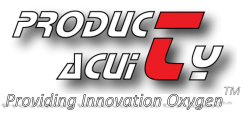Key Resources
Key Resources describe the assets required to carry out your key activities in creating and delivering your value proposition. Your resources allow your enterprise to create your offering, reach markets, maintain relationships with Customer Segments, and earn revenues. Different Key Resources are needed depending on the type of business model. A microchip manufacturer requires capital-intensive production facilities, whereas a microchip designer focuses more on human resources. Key resources can be owned or leased by the company or acquired from key partners.
Questions to addressing Key Resources
- What Key Resources do our Value Propositions require?
- Our Distribution Channels?
- Customer Relationships?
- Revenue Streams?
Types of Key Resources
Key Resources can be categorized as follows:
- Physical -This category includes physical assets such as manufacturing facilities, buildings, vehicles, machines, systems, point-of-sales systems, and distribution networks. Retailers like Wal-Mart and Amazon.com rely heavily on physical resources, which are often capital-intensive. The former has an enormous global network of stores and related logistics infrastructure. The latter has an extensive IT, warehouse, and logistics infrastructure.
- Intellectual Property - Intellectual property resources such as brands, proprietary knowledge, patents and copyrights, partnerships, and customer databases are increasingly important components of a strong business model. Intellectual property resources are difficult to develop but when successfully created may offer substantial value. Consumer goods companies such as Nike and Sony rely heavily on brand as a Key Resource. Microsoft and SAP depend on software and related intellectual property developed over many years. Qualcomm, a designer and supplier of chip sets for broadband mobile devices, built its business model around patented microchip designs that earn the company substantial licensing fees.
- Human - Every enterprise requires human resources, but people are particularly prominent in certain business models. For example, human resources are crucial in knowledge-intensive and creative industries. A pharmaceutical company such as Novartis, for example, relies heavily on human resources: its business model is predicated on an army of experienced scientists and a large and skilled sales force.
- Financial - Some business models call for financial resources and/or financial guarantees, such as cash, lines of credit, or a stock option pool for hiring key employees. Ericsson, the telecom manufacturer, provides an example of financial resource leverage within a business model. Sprint may opt to borrow funds from banks and capital markets, then use a portion of the proceeds to provide vendor financing to equipment customers, thus ensuring that orders are placed with Sprint rather than competitors.
